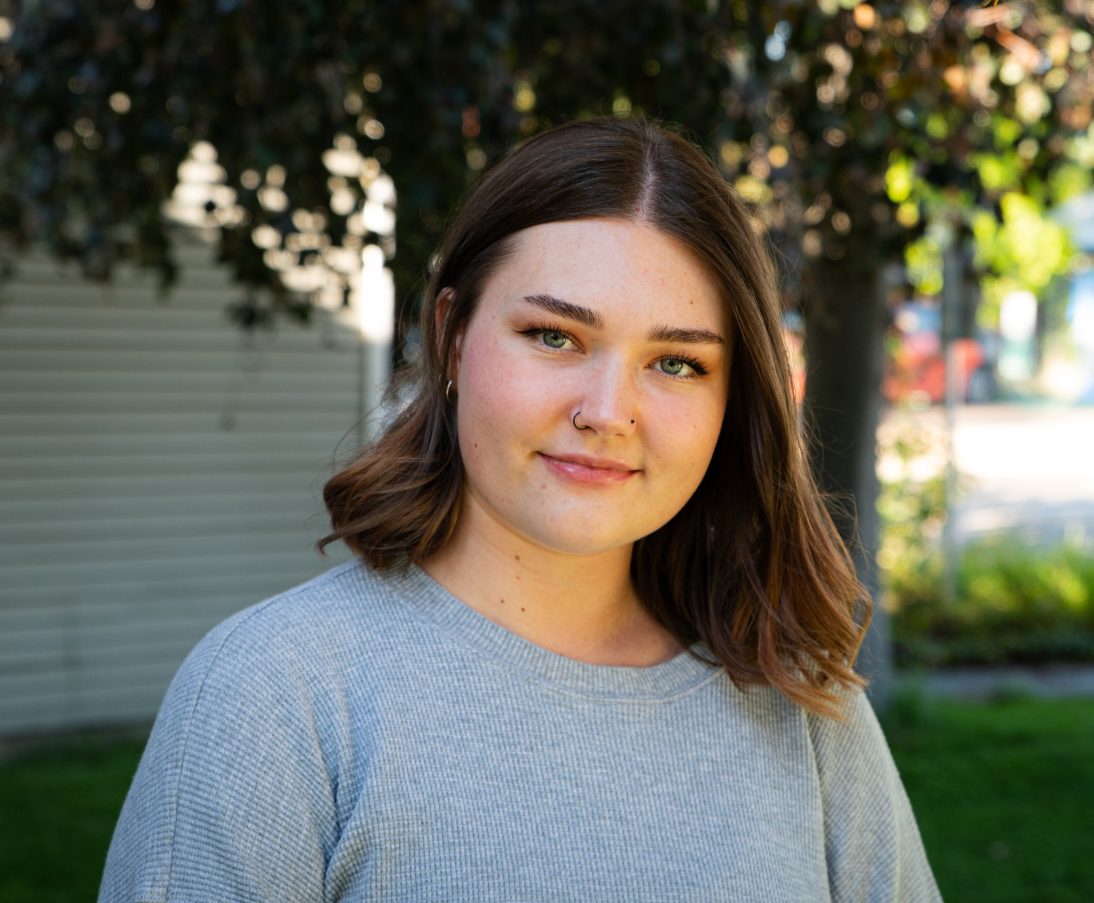After spending over 280 practicum hours with the Office of Student Affairs (OSA), Bachelor of Social Work students Jayden Scherbarth and Karlie Clarke engaged in public outreach initiatives for the 2024 review of Policy BRD-25-0, creating promotional materials for workshops, attending various educational events, facilitating group discussions and networking with other regional anti-violence agencies.
- Scherbarth and Clarke co-designed and co-facilitated a Healthy Relationships workshop with residence staff, which 40-plus students attended.
- Scherbarth developed some new facilitation materials for a Responding to Disclosures training that Sexualized Violence Prevention and Response (SVPR) delivered to the TRU security team.
- Both drafted new educational materials regarding consent and alcohol use and content that debunked rape myths.
- Both interviewed staff from Kamloops Sexual Assault Counselling Centre and the Y Women’s Emergency Shelter.
- Both explored the roots of gender-based violence and its connection to colonialism during training at the former residential school, facilitated by the Kamloops Aboriginal Friendship Society, called Let’s Talk About Racism.

Jayden Scherbarth
Much of Scherbarth’s practicum was “research and reflection-based, and some learning outcomes were about understanding myself as a burgeoning professional and developing skills I will use as a social worker.” She noted that her supervisor, SVPR manager Amber Huva, and practicum faculty liaison Juliana West, “made it easy to ask questions, comment and seek clarification.”
OSA Director Cassie Greenough was her first point of contact, who set her up with various projects and mentors. “There’s such a high opinion of Cassie on campus,” Scherbarth said. “She trusts people and ensures that folks feel that trust through empathy and care. I’ve seen her navigate tough situations, holding her own and standing in her integrity with grace.”
Clarke, who shadowed case managers and observed their day-to-day activities, also worked with Academic Integrity and observed Huva facilitate presentations and training sessions. She learned that group responses regarding challenging concepts around violence prevention and consent education may vary. “Amber would meet people where they were at with her head held high. I was grateful to watch and learn.”
Both students appreciated the opportunities to unpack situations after the fact, where Huva made space to discuss and decompress. “Amber would ask us: ‘What did you notice? What went well?’ Clarke reflected, “I gained a lot of knowledge and wisdom from those conversations.”
Scherbarth added: “Debriefing was often a part of my day that happened either at the end or beginning of the day or after workshops and educational events, which was helpful for me when we talked about challenging aspects of anti-violence work.”
Huva said that working alongside practicum students is a reciprocal relationship. “Their enthusiasm and excitement for the work are contagious, and they bring fresh ideas to the table that benefit our programming. Their curiosity reminds us to stay humble and question the thinking and patterns that guide our own practice. They bring hopefulness and light to our office’s work, and we’re lucky to have them.”

Karlie Clarke
As OSA director Greenough generally deals with tragedies, emergencies, crises, and challenges; being able to mentor practicum students provides a healthier balance. “The frequency and intensity of Student Affairs can be draining. Working with students lightens the weight of those challenges. I look forward to these work terms.”
Working with students keeps Greenough deeply rooted in the emotional landscape of the student experience. “I feel joy and pride in seeing a student project come to fruition, watching their presentations, reading their work, and hearing about their processes, experiences, and outcomes. “Seeing their growth, skillset development, and successes affirm our purpose.”
“I’ve learned to be honest about where you’re at; you don’t need to be an expert when you are here to learn,” Scherbarth said. “I’d encourage other students to step out of their comfort zone and attempt things they haven’t tried; that’s where the learning happens!”
Clarke shared that working with strong women as role models and mentors was important to her.
“They operated with self-knowledge and in recognition of the humanity in others. I could be authentic in the workplace; I’m able to show up as myself. When I move into the professional realm, I want to be someone’s Cassie or Amber.”
Scherbarth and Clarke have since re-joined the team as anti-violence student ambassadors for SVPR. In these roles, they’ll engage in campus outreach activities and events, develop resources and support SVPR initiatives like the Red Zone.
Learn more about policies, supports and processes at Sexualized Violence Prevention and Response and the Office of Student Life.

